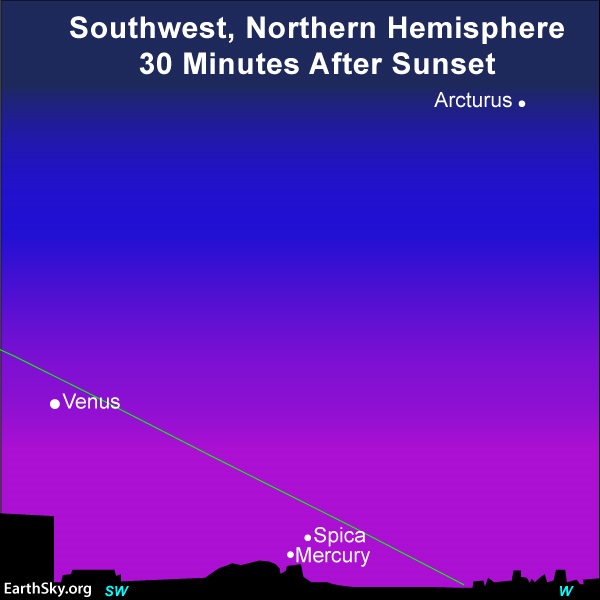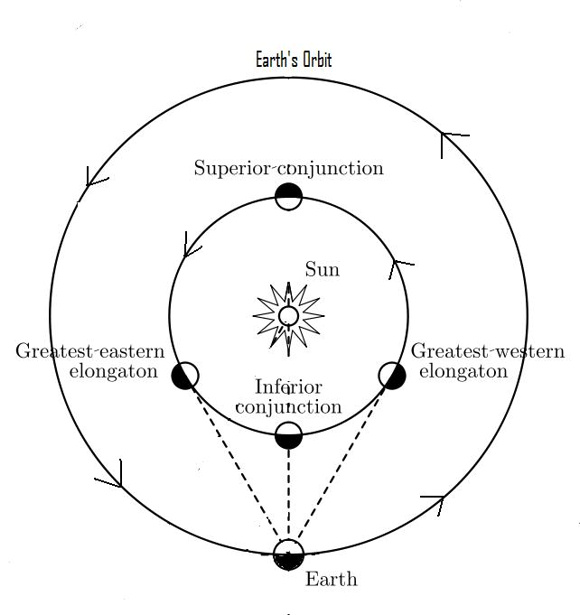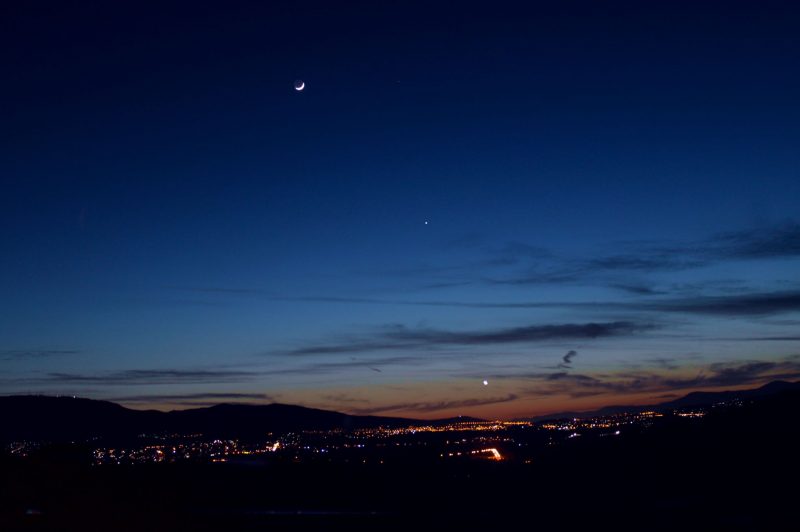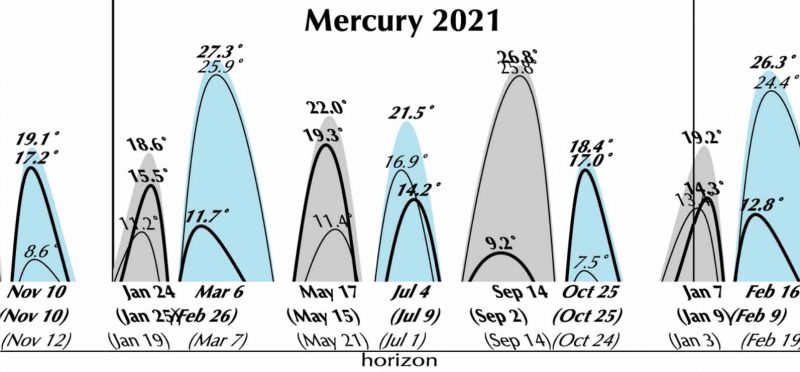Mercury greatest elongation September 14, best for S. Hemisphere

Mercury from Southern Hemisphere
Mercury reaches its greatest distance from the setting sun on the sky’s dome – a whopping 27 degrees – on September 14, 2021. Astronomers call it a greatest elongation of Mercury. The innermost planet has been staging its best evening apparition of 2021 for the Southern Hemisphere since late August. It’ll be visible at south temperate latitudes through the rest of September. If you’re on the southern part of Earth’s globe, you’ll find Mercury shining brightly now in the west until after the end of evening twilight. Venus is up there, too, blazing away more brightly than Mercury at nearly -4 magnitude. But Mercury is bright, too, brighter than most stars. It’s shining at around magnitude 0 when at greatest elongation.
Observers in the Southern Hemisphere (and the northern tropics) can easily see Mercury with the eye alone now. At temperate latitudes in the Southern Hemisphere, around the time of greatest elongation, Mercury will stay out for a long time – about 45 minutes – after nightfall. Meanwhile, at mid-northern latitudes, Mercury is difficult to see, immersed in the afterglow of sunset. If you’re in the Northern Hemisphere, you might need binoculars to find Mercury. At mid-northern latitudes, Mercury sets only about 45 minutes after sunset.
There’s a little star – fainter than Venus, fainter than Mercury – near the two planets. It’s Spica in the constellation Virgo the Maiden. Spica is one of our sky’s brightest stars. But it’ll appear diminished in the evening twilight glow. If you’re in the Southern Hemisphere, watch for Mercury-Spica conjunctions around September 23 and again around September 30.
Find the setting time of Mercury in your sky via timeanddate.com (worldwide) and Old Farmer’s Almanac (U.S. and Canada)



Mercury’s greatest evening elongation
We refer you to the illustration below. Mercury, an inferior planet, first entered the evening sky (at superior conjunction) on August 1, 2021. It’ll reach its greatest eastern (evening) elongation on September 14, 2021, and then sweep between the sun and Earth (at inferior conjunction) on October 9, 2021.
Afterwards, Mercury will emerge in the east before dawn, to stage 2021’s best morning apparition of Mercury for the Northern Hemisphere. Read more about Mercury on October mornings.

Seasonal advantage smiles on Southern Hemisphere
Far and away, the Southern Hemisphere enjoys the best evening apparition of Mercury for the year. For the Northern Hemisphere, this evening showing of Mercury is the poorest. You might wonder why the stark contrast between the two hemispheres.
Remember this rule. A greatest eastern (evening) elongation of an inferior planet (Mercury and Venus) is most favorable when it happens at or near the spring equinox. Conversely, a greatest eastern (evening) elongation is least favorable around the autumn equinox. This rule applies to both the Northern and Southern Hemispheres.
This year, Mercury’s greatest elongation comes on September 13 or 14, 2021 (depending on time zone). That’s in close vicinity to the September 22 equinox.
The September equinox counts as the Southern Hemisphere’s spring equinox, yet the Northern Hemisphere’s autumn equinox. That’s why the evening apparition of Mercury in August-September 2021 so greatly favors the Southern Hemisphere. If you live in the Southern Hemisphere, take advantage of your golden opportunity. Let your eyes feast upon Mercury at its finest in your evening sky!


Bottom line: Watch for Mercury from the Southern Hemisphere around the time of its greatest elongation on September 14, 2021. Meanwhile, from northerly latitudes, bring binoculars!












